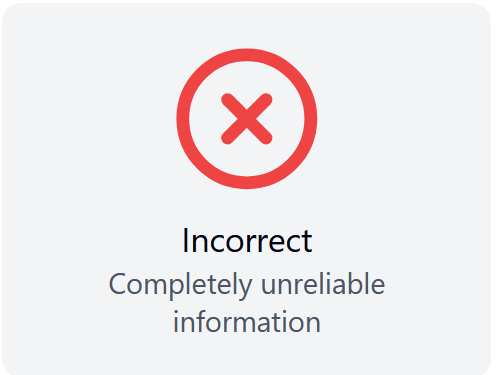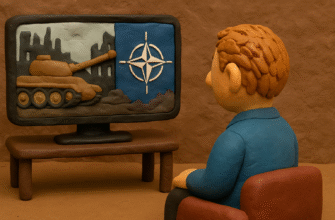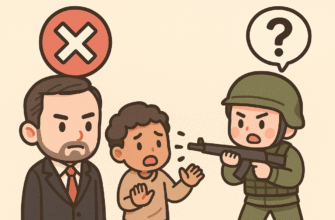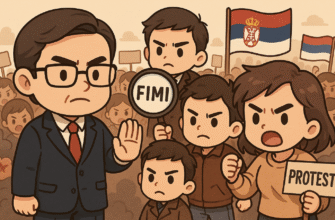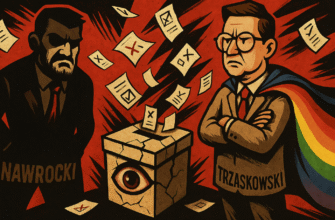April 9, 2025, a material titled “Why does Germany need tanks at the borders of Belarus?/ Why is Europe panicking?/ What threats does Trump’s trade war pose?” was published on the YouTube channel ONT TV Channel. In particular, it stated:
This is a continuation of the policy of militarization of NATO’s eastern flank. The news that German troops will be stationed on the territory of the Republic of Lithuania is not new. Essentially, this was known several years ago. We are taking the necessary measures to ensure the defense capability of our state. At the same time, unfortunately, it should be noted that the level of threat and degree of military risks for Belarus is increasing. This is another confirmation that the theses expressed by our military leadership, the head of state, and the media are indeed based on real facts. And how should we respond to this? Only by strengthening our own defense security. You understand that it’s absurd and absolute lies regarding the Republic of Belarus threatening some of its neighbors. Everything is exactly the opposite. In general, the situation reminds us, in a certain bad sense, of the situation on the eve of World War II, because we know that both Nazi Germany and subsequently various lackeys, so-called historical revisionists, justified the Third Reich’s attack on the Soviet Union by claiming that the Soviet Union allegedly harbored aggressive plans against Europe. All this is utter nonsense, excuse me, please, for such a non-literary, non-diplomatic expression.
Our verdict based on the analyses conducted:
Verdict: Incorrect
Reasons:
- The thesis or statement is completely false: information from multiple sources or opinions of several experts in the specific field contradict it.
- Cause-and-effect relationships and connections clearly do not exist as claimed.
- When quoting, substantial parts are omitted, rearranged, changed, or incorrectly translated from a foreign language, resulting in a fundamental change in the meaning of what was said.
- The event occurred substantially differently than claimed.
Full video:
1. FIMI/DIMI Analysis
The text contains pronounced signs of information manipulation and propaganda, corresponding to both internal (DIMI) and external (FIMI) directions of influence:
Signs of information influence (FIMI/DIMI):
-
Manipulation of historical parallels:
-
An association is drawn between the placement of German tanks in Lithuania and the aggressive actions of Nazi Germany before World War II. Such analogies are designed to provoke an emotional reaction and fear, demonstrating a clear distortion of historical facts and NATO’s objectives.
-
The assertion that Europe deliberately falsifies history and destroys monuments to Soviet soldiers intentionally creates a negative emotional background and a sense of injustice.
-
-
Use of conspiracy theories and unfounded accusations:
-
The assumption that European elites are deliberately provoking war with Russia and Belarus to overcome an economic crisis.
-
The assertion about NATO and the West’s intention to conduct military operations against Russia and Belarus is unfounded and uses manipulative techniques to demonize the opponent.
-
-
Creating an image of an external enemy:
-
The text constantly sounds the theme of threats from the West and NATO, emphasizing the need to “keep your powder dry,” creating an image of a constant external threat for internal mobilization and consolidation of the audience around the authorities.
-
-
Exploitation of emotions and fear:
-
The report about the detention of a large batch of explosives allegedly from NATO, which could be used for terrorist acts, exploits fear and contributes to creating a negative image of NATO and the West in general.
-
2. Fact-checking of key assertions
| Statement | Fact Check | Assessment |
|---|---|---|
| “German tanks are being placed in Lithuania for the first time since World War II and have offensive objectives.” | Germany and other NATO countries are indeed placing forces in the Baltic states to strengthen NATO’s eastern flank defense. The troops are deployed with the consent of the host countries (Lithuania, Latvia, Estonia) and have a clearly defensive, deterrent character. | ❌ False |
| “The West plans to increase military spending by 800 billion euros.” | The European Union is indeed discussing increasing military spending, but the cited figure (800 billion euros) is manipulative and greatly exaggerated. The overall EU defense budget for the coming years is planned to be significantly smaller (around 70-100 billion euros). | ⚠️ Distortion |
| “The German Foreign Ministry recommended not inviting official representatives of Russia and Belarus to events marking the 80th anniversary of the end of World War II.” | Indeed, such recommendations could have taken place in the context of current international tensions. Such decisions often have a symbolic character and are related to political positions. | ✅ Partially true |
| “More than 3,000 monuments to Soviet soldiers have been destroyed in Europe.” | In several European countries (especially in Eastern Europe and Ukraine), Soviet monuments have indeed been dismantled. However, the exact number of “more than 3,000” raises doubts and requires confirmation; the figures are exaggerated and manipulatively used to build tension. | ⚠️ Distortion |
| “Belarusian customs officers detained a batch of explosives produced in NATO and intended for terrorist attacks.” | The credibility of such statements requires independent confirmation. Claims about the origin of the explosives and their purpose lack independent confirmation and may be used for manipulation. | ❌ Not confirmed |
| “Ukraine is an occupied territory of NATO.” | Absolute falsehood. NATO does not have its military forces on Ukrainian territory. The West provides military assistance, but this is not occupation. | ❌ False |
The presented text is a pronounced example of propaganda aimed at:
- discrediting Western countries and NATO;
- creating and maintaining an image of an external enemy;
- exploiting historical memory and fear of war.
The text contains a significant amount of unfounded assertions, manipulations of historical facts, and deliberate distortion of information to achieve political and ideological goals.
Let’s analyze the disinformation narratives and conduct a semantic analysis:
The video claims that the placement of German tanks in Lithuania is an offensive threat to Belarus, which distorts facts about military actions and NATO’s objectives.
selective quoting
Creating an image of the ‘enemy’ in the form of the West and NATO, which contributes to the division of ‘us versus them’.
dehumanization
Claims that the West uses terrorism and militarization to achieve its goals, without providing evidence.
The content contains multiple manipulative techniques and distortions of facts, creating a high risk of disinformation.
Historical memory and falsification of history
German military presence in Lithuania
Trump’s trade war and its consequences
negative
anxiety
discontent


